Turquoise tiles in a modern interior

Decorating a bathroom or kitchen in turquoise colors is a great opportunity to remind yourself of your seaside holiday. This shade is pleasantly relaxing after a working day and invigorating in the morning. Turquoise in interior decoration is becoming more and more popular today, displacing the conservative white color and its shades from the pedestal.
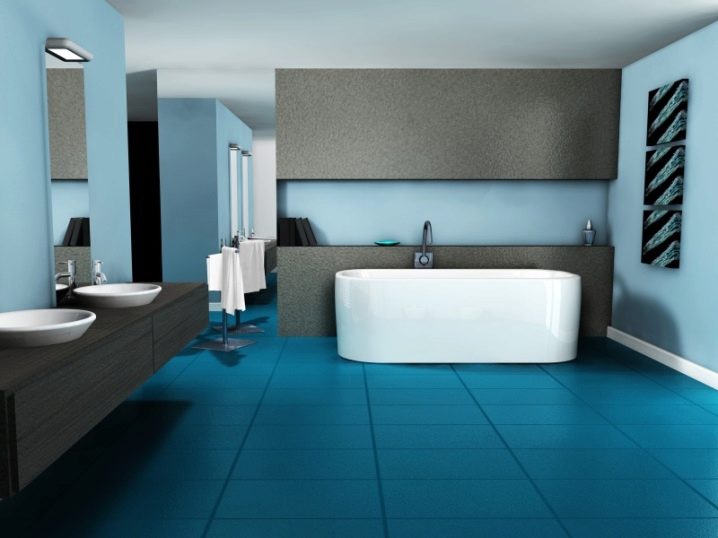
Specifications
Ceramic floor and wall tiles in turquoise color have different properties and characteristics, so they must be used in accordance with these features.
Wall tiles must not be tiled on the floor., since its strength properties are not designed for the weight of household flooring appliances and plumbing fixtures.
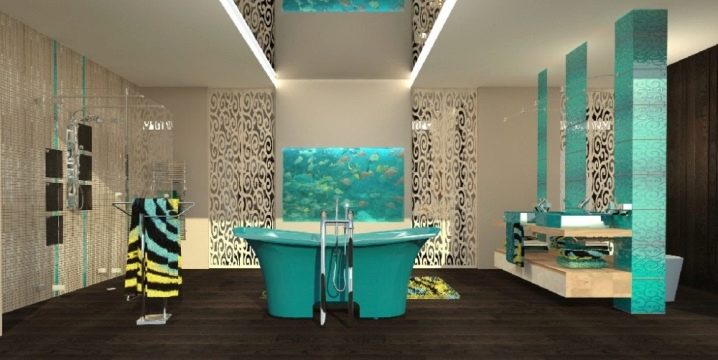
It is not difficult to distinguish a floor tile from a wall option:
- on the floor materials on the back there is a foot;
- the wall tile depicts a hand.
The “AA” mark means the tiles are resistant to chemicals. Such material can be safely cleaned with detergents with any additives.
When choosing a turquoise finish, it is better to opt for medium-sized items. Standard wall tiles 20x20 cm or 20x30 cm combine perfectly with fine cladding. You should not use large options (60x60 cm and more) in the interior of a small bathroom. Such elements visually divide the room into separate blocks, so it looks smaller.
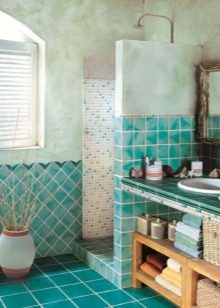
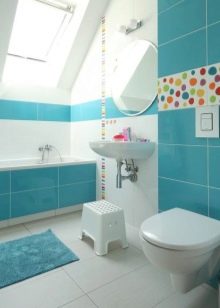
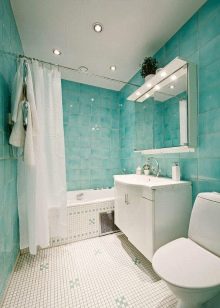
A large tile will successfully fit into the interior of a spacious kitchen, for example, for facing an apron over a work surface.
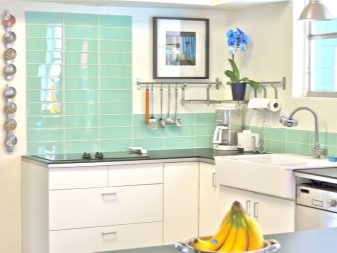

An interesting design trick (often used today) is the combination of large and medium or medium and small tiles. Such variations allow you to create interesting ornaments and patterns on the surface. As a standard, turquoise tiles are in the shape of a square or rectangle, but round or oval options can be found on sale.
However, in all cases, an immutable rule will apply - the horizontal arrangement of rectangular tiles makes the space wider, vertical - higher.

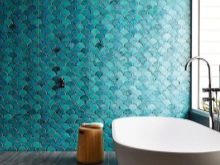
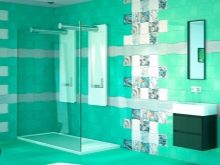
Color combinations
The turquoise color is very vibrant and active. You can overdo it with finishes in these colors. The inclusion of white elements or the choice of white as the basis of the decor will help soften the obtrusiveness of the turquoise palette.
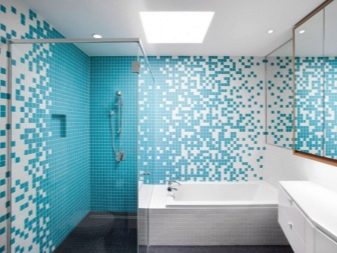

Another good combination is turquoise and gray (silver) color. In addition, turquoise juiciness is perfectly diluted with a warm beige tone. Such combinations bring a nautical theme and some luxury to the interior.
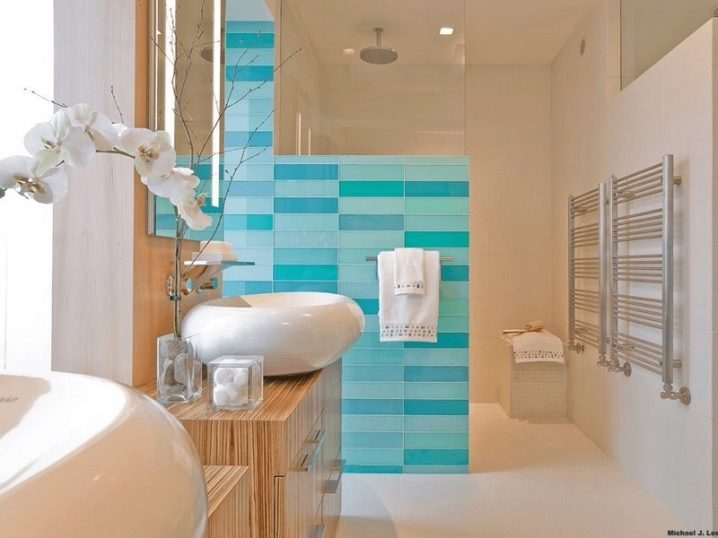
The classic duo is turquoise with a chocolate brown hue. At the same time, both the floor and furniture can be decorated in brown tones, and the wall cladding is given to turquoise. The rather cold range of turquoise color will be softened by the warmth of chocolate, making the interior cozy and original.
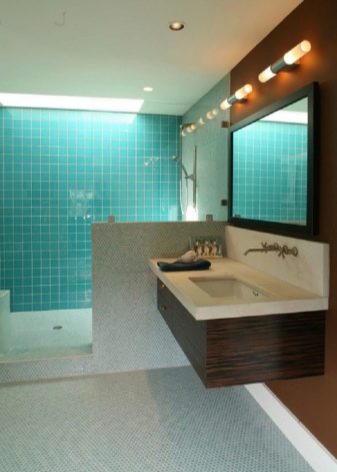
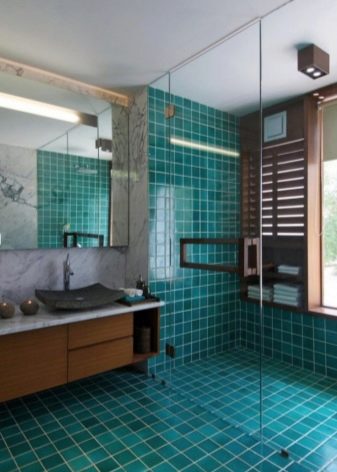
A small design secret: combining turquoise color with a warmer tone (chocolate, beige, sand), it is better to place a rich color scheme in the upper part of the wall cladding, then the space will not look heavy and “pressing on your head” with a dark palette. As noted above, it is easy to overdo it with turquoise tiles, so it is not worth revealing the entire bathroom or kitchen with it. If you still want to keep the interior in just such tones, choose a tile with a dull, but diluted white, color.
Designers recommend choosing ceramics of different textures - both glossy and matte, but correctly place accents.For example, the area near the sink can be made in gloss, while matte turquoise tiles can be laid out around the perimeter of the bathroom.
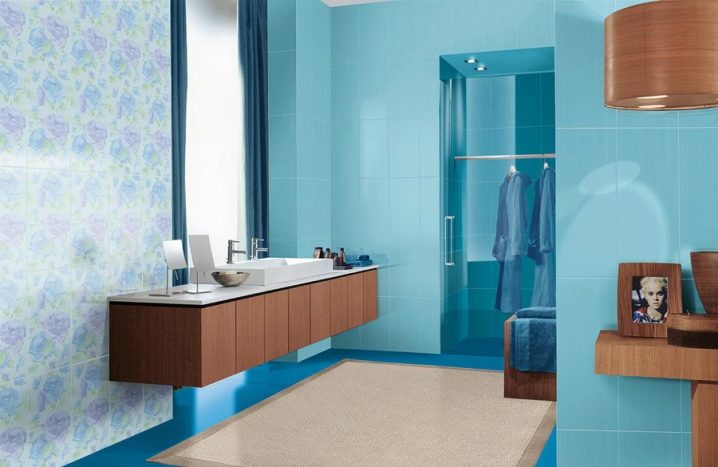
The most unfortunate combination is a shade of turquoise with black and red. A rich turquoise will not overlap with equally rich palettes. Visually, such a room will seem overly colorful and inharmonious.
In the interior
It is extremely rare that turquoise tiles are used for flooring, but a kitchen apron in this color design is a good solution in any interior style. Turquoise is in harmony with:
- with natural materials;
- elements of classic luxury - wood, brass, gilding;
- with details in contrasting shades of white and beige.


By varying shades of turquoise, you can create a kitchen in a style from moderate classics to extravagant modern. The interior with turquoise tiles has a special charm - it attracts attention, but does not look vulgar, it is equally good to relax in the evening and wake up in the morning.
Output
Turquoise tiles are a good solution for bathroom design. They are suitable in moderate volumes for the kitchen, for example, when lining the apron of the work area. Such material is combined with wood of both dark and light species, looks luxurious with gilded fittings, looks modest and inconspicuous against a silver background.
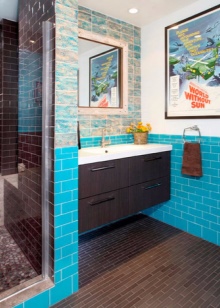
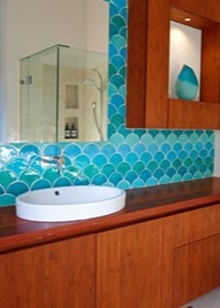
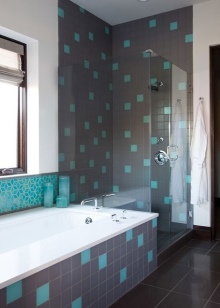
See below for what to consider when combining tiles of different sizes.













The comment was sent successfully.